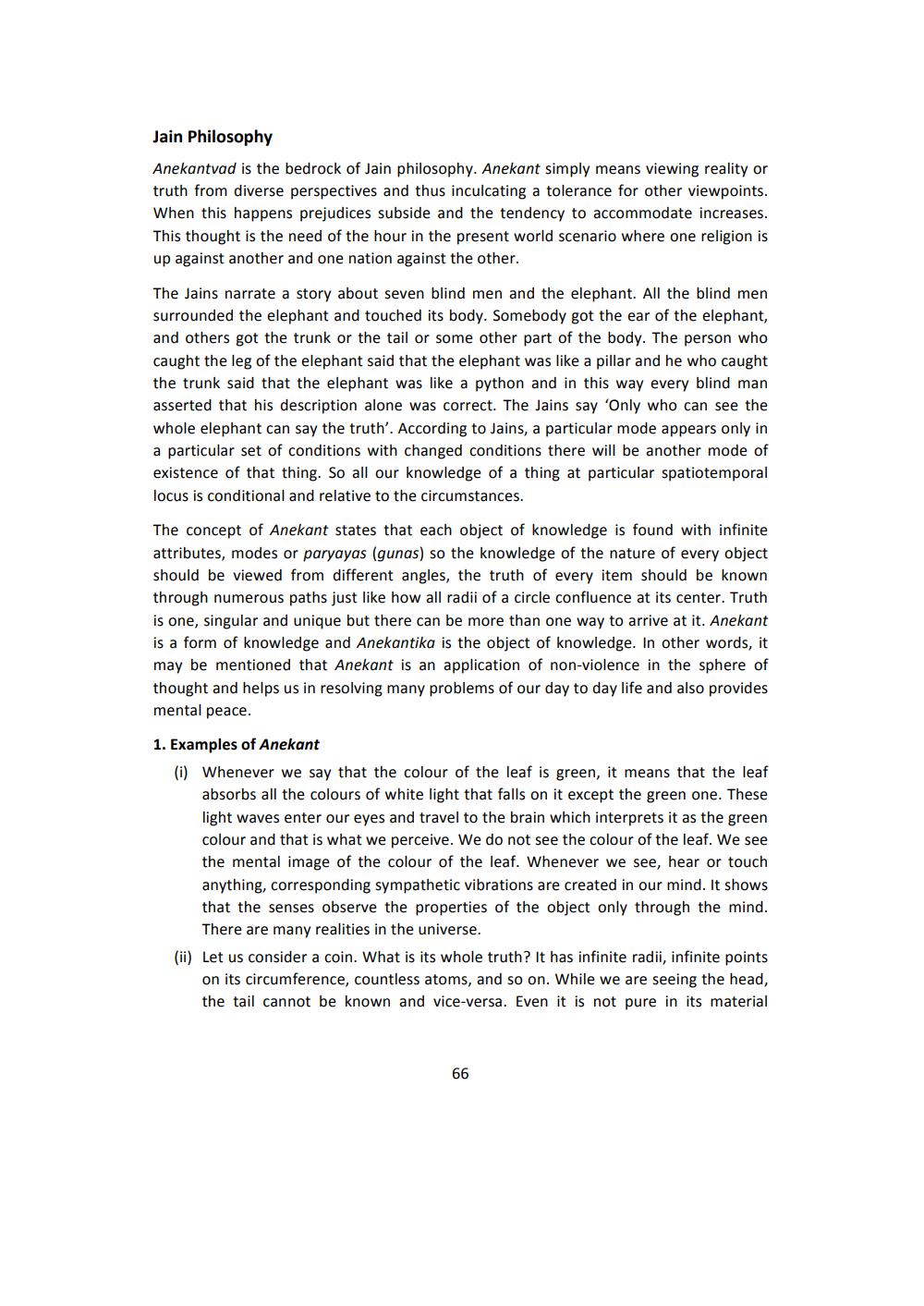________________
Jain Philosophy
Anekantvad is the bedrock of Jain philosophy. Anekant simply means viewing reality or truth from diverse perspectives and thus inculcating a tolerance for other viewpoints. When this happens prejudices subside and the tendency to accommodate increases. This thought is the need of the hour in the present world scenario where one religion is up against another and one nation against the other.
The Jains narrate a story about seven blind men and the elephant. All the blind men surrounded the elephant and touched its body. Somebody got the ear of the elephant, and others got the trunk or the tail or some other part of the body. The person who caught the leg of the elephant said that the elephant was like a pillar and he who caught the trunk said that the elephant was like a python and in this way every blind man asserted that his description alone was correct. The Jains say 'Only who can see the whole elephant can say the truth'. According to Jains, a particular mode appears only in a particular set of conditions with changed conditions there will be another mode of existence of that thing. So all our knowledge of a thing at particular spatiotemporal locus is conditional and relative to the circumstances.
The concept of Anekant states that each object of knowledge is found with infinite attributes, modes or paryayas (gunas) so the knowledge of the nature of every object should be viewed from different angles, the truth of every item should be known through numerous paths just like how all radii of a circle confluence at its center. Truth is one, singular and unique but there can be more than one way to arrive at it. Anekant is a form of knowledge and Anekantika is the object of knowledge. In other words, it may be mentioned that Anekant is an application of non-violence in the sphere of thought and helps us in resolving many problems of our day to day life and also provides mental peace.
1. Examples of Anekant
(i) Whenever we say that the colour of the leaf is green, it means that the leaf
absorbs all the colours of white light that falls on it except the green one. These light waves enter our eyes and travel to the brain which interprets it as the green colour and that is what we perceive. We do not see the colour of the leaf. We see the mental image of the colour of the leaf. Whenever we see, hear or touch anything, corresponding sympathetic vibrations are created in our mind. It shows that the senses observe the properties of the object only through the mind.
There are many realities in the universe. (ii) Let us consider a coin. What is its whole truth? It has infinite radii, infinite points
on its circumference, countless atoms, and so on. While we are seeing the head, the tail cannot be known and vice-versa. Even it is not pure in its material
66




